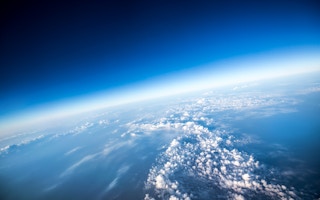Scientists say warm upper air this September and October helped shrink the man-made ozone hole near the South Pole slightly.
The hole is an area in the atmosphere with low ozone concentrations. It is normally at its biggest this time of year. The U.S. space agency says on average it covered 8.1 million square miles (20.9 million sq. kilometers) this season. That’s 6 percent smaller than the average since 1990.
High-altitude ozone shields Earth from ultraviolet radiation.
NASA chief atmospheric scientist Paul A. Newman says the main reason for this year’s result is local weather. The upper air has been warmer than normal, which led to fewer polar stratospheric clouds. These clouds are where ozone is destroyed by chlorine and bromine, which come from man-made products.
James Butler, director of the global monitoring division at the National Oceanic and Atmospheric Administration’s Earth System Research Lab, said Wednesday that the new figures are “sort of encouraging news.”
“It’s not getting worse,” Butler said. “That’s a good sign.”
Butler said it stopped getting worse around the late 1990s. But he added, “We can’t say yet that it’s a recovery.”
Newman and Butler said they can’t tell if the ozone hole changes are related to man-made global warming.
While warm upper air helped keep the ozone hole small, the surface of the Southern Hemisphere was also warm last month, with the second-highest average temperature on record for September, NOAA announced Wednesday. Records go back to 1880.
For the entire globe, last month tied 2003 for the fourth hottest September on record. September was the 343rd consecutive month that global temperatures have been higher than the 20th century average.
This year, after nine months, is on track to be the sixth warmest on record globally.
For the United States, this was the sixth warmest September on record and the hottest since 2005. But the nation’s average temperature over the first nine months of the year is only the 28th highest on record.

















